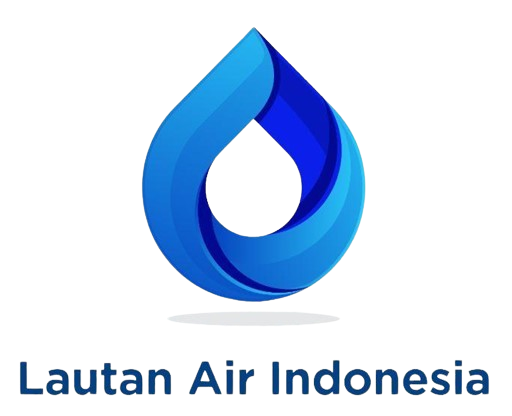Reverse osmosis is one of the most widely used water purification technologies in various industrial sectors today. Its ability to remove dissolved ions, chemical compounds, heavy metals, and microparticles makes it an ideal solution for producing water with a high level of purity. This process not only helps improve operational efficiency but also maintains the stability of product quality that is highly dependent on water as the main component.
In this article, we will discuss in depth what reverse osmosis is, the main features that make it superior to other purification methods, and the various applications of reverse osmosis in the industrial world.
What is Reverse Osmosis?
Reverse osmosis (RO) is an advanced water purification method that uses a semipermeable membrane to filter contaminants at high pressure. This process effectively separates ions, dissolved particles, microorganisms, and organic compounds, producing water with a very high level of purity.
In demineralization systems, reverse osmosis is usually used as a final stage (polisher) to remove residual ions and microparticles, making it ideal for ultrapure water needs in various industrial sectors.
However, despite its effectiveness, RO membranes are susceptible to several technical problems, such as:
- Fouling by organic matter, mud, and microorganisms
- Scaling by calcium, magnesium, iron, and silica ions
- Membrane degradation due to exposure to oxidative chemicals
To overcome these challenges, a proper pretreatment and chemical treatment system is needed so that RO can work optimally and last a long time.
Read Also: Ultrafiltration: Benefits, Maintenance, and Challenges
Key Features of Reverse Osmosis
Reverse osmosis technology has a number of superior features that make it the primary choice in advanced water purification systems:
1. High Filtration Capability
Reverse osmosis is capable of filtering up to 99% of total dissolved solids (TDS), including heavy metals, salts, bacteria, viruses, and organic compounds. This makes it very effective for producing high-quality water from highly contaminated water sources, such as brackish water or surface water.
2. Energy and Operational Efficiency
Modern RO systems have been designed to have better energy efficiency, especially with the use of low-power high-pressure pumps and energy recovery technology. In addition, these systems can be automatically controlled with IoT-based sensor devices and monitoring systems, allowing for maximum operational efficiency.
3. Modular and Scalable
Reverse osmosis systems can be designed in a modular configuration that makes it easy to adjust capacity as needed. This is very important for industries that experience growth or fluctuations in process water requirements.
Reverse Osmosis Applications in Industry
Reverse osmosis is widely used in various industrial sectors to produce ultrapure water, maintain process efficiency, and reduce the risk of corrosion and scaling. Here are some of the main sectors that have utilized RO technology from Lautan Air Indonesia:
1. Power Generation
RO systems are used to produce high-quality boiler feed water, to prevent scale and corrosion in turbines and high-pressure pipes, and to maintain the operational efficiency of power plants.
2. Palm Oil & Oleo
RO water is used for washing, dissolving, and sanitation purposes, while maintaining product quality and waste processing efficiency in the palm oil and oleochemical industries.
3. Pulp & Paper
In the paper industry, RO helps control TDS (Total Dissolved Solids), maintain the characteristics of the final product, and reduce the chemical load in the production process.
4. Food & Beverage
RO technology ensures the availability of ultrapure water for raw material needs, washing, and sanitation—ensuring the safety and quality of food and beverage products.
5. Municipal Water & Wastewater
RO is used in the production of drinking water from surface or sea water (desalination), as well as in wastewater reuse systems as a sustainable water management solution.
Read Also: How to Increase RO Recovery Rate for Optimal Efficiency
Trust Your Reverse Osmosis Needs to Lautan Air Indonesia
Understanding the complexity of reverse osmosis systems and the challenges that may arise, Lautan Air Indonesia offers a comprehensive solution that is not only limited to the installation of RO units, but also includes aspects of long-term maintenance and optimization. We provide integrated services ranging from system planning, selecting technology that suits the characteristics of raw water, providing supporting chemicals, to periodic maintenance programs.
Several common challenges in RO systems such as fouling, scaling, and membrane degradation can have a serious impact on system performance if not handled properly. Therefore, Lautan Air Indonesia provides a series of supporting solutions to maximize the performance and service life of RO membranes, including:
- Chemical antiscalants, to prevent scale formation on the surface of the RO membrane.
- Oxidizing biocides and chlorine scavengers, to maintain the quality of feed water and protect the membrane from microbiological contamination and damage due to oxidation.
- Cleaning-in-place (CIP) procedures, as a routine maintenance solution to restore membrane performance that has decreased due to dirt.
With over four decades of experience in the water treatment industry, Lautan Air Indonesia has become a trusted partner in providing reverse osmosis solutions for various industrial sectors, from power generation, oil and gas, petrochemical, food and beverage, to municipal water treatment.
We do not only sell products, but also provide solutions designed for efficiency, sustainability, and long-term reliability. Our technical team is ready to assist you from the initial planning stage to routine post-installation maintenance.
Contact us for further consultation and find out how Lautan Air Indonesia’s reverse osmosis technology can improve operational efficiency and water quality in your industry.






